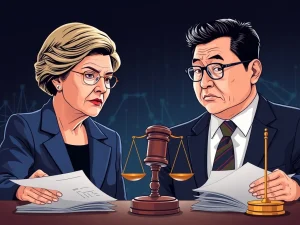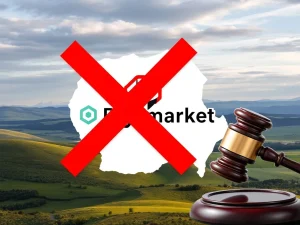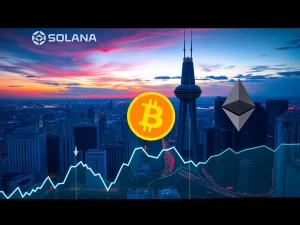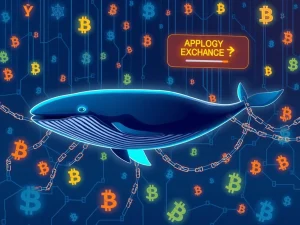XRP’s Triumphant Clarity: How the Ripple vs. SEC Lawsuit Transformed its Future
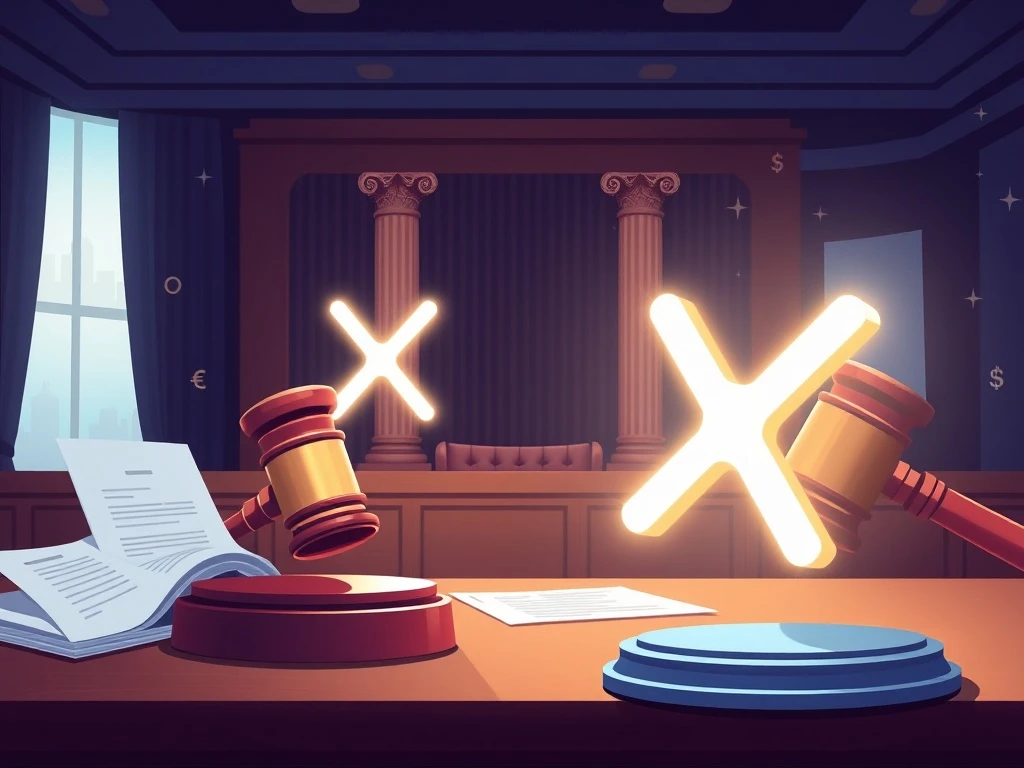
The **Ripple vs. SEC** lawsuit once cast a dark shadow over **XRP**. What initially appeared as an existential threat has, surprisingly, transformed into its greatest strategic advantage. This landmark legal battle ultimately delivered definitive **XRP regulatory clarity**, fundamentally strengthening its narrative. Join us as we explore how this prolonged legal challenge ultimately forged a unique and powerful position for XRP in the global cryptocurrency landscape.
The Genesis of the XRP Lawsuit: An Existential Threat
In December 2020, **XRP** faced an existential threat. The U.S. Securities and Exchange Commission (SEC) launched a bombshell lawsuit. This action alleged that **Ripple Labs**, the company behind **XRP**, had conducted unregistered securities offerings. Specifically, the SEC claimed Ripple sold over $1.3 billion worth of XRP since 2013. This unexpected legal challenge sent shockwaves through the crypto market. Consequently, **XRP price** plummeted by 62% almost immediately. Many exchanges also delisted the digital asset. This move plunged XRP into a deep legal grey area. The timing, during the final days of the Trump administration, caught the entire crypto industry by surprise. Many observers believed this legal action could spell the end for XRP. However, this very challenge eventually forged its greatest strategic advantage. The prolonged **XRP lawsuit** became a crucible, ultimately leading to unparalleled legal clarity.
Uniting the Ranks: The XRP Army’s Fight for Regulatory Clarity
Even before the lawsuit, critics often used the term “XRP army” derogatorily. They mocked the token’s passionate supporters. However, the **XRP lawsuit** transformed this perception. It galvanized the community, uniting them against a common adversary. This passionate group became one of crypto’s most organized movements. Unlike many other cryptocurrencies, **Ripple Labs** oversees XRP. It functions as an integral part of Ripple’s modern cross-border payments infrastructure. Therefore, achieving **XRP regulatory clarity** was not merely desirable; it was essential for long-term success. Ripple CEO Brad Garlinghouse articulated this conviction early on. In a December 2020 blog post, he declared, “We are not only on the right side of the law, but we will be on the right side of history.” Attorney John Deaton played a pivotal role in this mobilization. He rallied over 75,000 XRP holders. These individuals submitted affidavits and provided testimonies, actively supporting Ripple’s defense. Over several years, the XRP army lobbied extensively. They also organized petitions and coordinated powerful social media campaigns. These efforts kept the case in the public spotlight. Simultaneously, they applied pressure on regulators. Their collective voice became a significant force in the legal battle.
Did you know? The XRP Ledger processes payments rapidly, settling in five to ten seconds worldwide. This speed feels instantaneous compared to Bitcoin, which often takes over ten minutes.
Pivotal Victories: Shaping XRP Regulatory Clarity
Ripple achieved its first significant legal victory in September 2022. Courts compelled the SEC to release emails from former Director William Hinman. These internal communications exposed significant contradictions within the SEC’s regulatory stance on cryptocurrencies. A key point of contention involved Ether’s (ETH) classification. Hinman had described ETH as a “native token, not a security,” citing its sufficient decentralization. However, documents revealed through the **Ripple vs. SEC** lawsuit showed that many SEC officials disagreed with Hinman’s public statements. This inconsistency created a substantial blow to the SEC’s case against XRP. It raised a critical question: if ETH was not a security, then how could XRP be?
A month later, Judge Analisa Torres issued a pivotal ruling. This decision established crucial legal distinctions for **XRP regulatory clarity**:
- Institutional Sales: XRP sales directly to hedge funds and other institutional buyers were classified as unregistered securities offerings. These transactions involved sophisticated investors who had an expectation of profit from Ripple’s efforts.
- Programmatic Sales: Conversely, XRP sold on public exchanges was not a security. Retail buyers, purchasing through exchanges, generally had no reasonable expectation of profits derived from Ripple’s specific entrepreneurial efforts.
This nuanced ruling provided Ripple with a partial, yet profoundly significant, victory. It helped establish XRP as a cryptocurrency, not inherently a security, especially for secondary market sales. **Ripple Labs** continued to build on these successes throughout 2023. Ultimately, in August 2024, the final penalty against Ripple was set at $125 million. This represented a staggering 95% reduction from the SEC’s initial demand of $2.2 billion, signaling a clear shift in the legal tide.
The Definitive Conclusion of the Ripple vs. SEC Lawsuit
The protracted **Ripple vs. SEC** lawsuit finally concluded on August 7, 2025. Both parties filed a joint dismissal of their ongoing appeals with the U.S. courts. This formal action brought years of litigation to a definitive close. Ripple’s Chief Legal Officer, Stuart Alderoty, succinctly marked the occasion. He posted on X, “The end…and now back to business.” This statement encapsulated the relief and renewed focus within **Ripple Labs**.
The final outcome cemented Judge Torres’ 2023 ruling. It established a binding legal precedent with far-reaching implications:
- XRP is definitively not a security when sold on public exchanges. This crucial distinction provides clear **XRP regulatory clarity** for retail investors and secondary markets.
- A clear methodology for classifying crypto sales as securities offerings emerged. This applies specifically to sales made to institutional buyers.
- The $125 million fine represents a manageable penalty for Ripple. It stands in stark contrast to the SEC’s initial $2.2 billion demand. This fine is well within Ripple’s treasury reserves.
The market reacted positively to this decisive news. **XRP price** surged by 4.5% immediately following the announcement, reaching an impressive $3. This marked substantial growth for the coin. During the dark days of 2020, its value had plummeted to approximately $0.20. The conclusion of the **XRP lawsuit** removed a significant overhang, unlocking new potential for the digital asset.
Did you know? The XRP Ledger has processed around 2 million transactions per day so far in 2025. Weekly payments now exceed 8 million, an increase of 800% since 2023. In April 2025, Ripple acquired Hidden Road, a prime broker, for $1.25 billion. This acquisition represents one of the largest M&A deals in crypto, enhancing trading and liquidity capabilities for institutional clients.
How the XRP Lawsuit Forged a Unique Narrative
The final verdict of the **Ripple vs. SEC** case profoundly reshaped XRP’s narrative. XRP transformed from a regulatory pariah into a cryptocurrency with official judicial validation. This stands in stark contrast to Bitcoin (BTC) and Ether (ETH). These leading cryptocurrencies still rely on informal SEC guidance. While no official companies operate BTC or ETH, making lawsuits challenging, XRP now possesses explicit legal standing.
For the dedicated community, the prolonged **XRP lawsuit** forged an unbreakable bond. The “XRP army” emerged stronger and more committed than ever. Their conviction, tested by years of market adversity, now feels validated. This collective resilience underscores the power of a united user base.
Furthermore, the legal victory provides essential clarity for institutional investors. Previously, the ongoing lawsuit created significant uncertainty. Many institutions hesitated to invest in XRP. However, since the July 2023 ruling, and especially after the final dismissal, XRP has experienced a remarkable surge. It added nearly $180 billion to its market capitalization. This demonstrates renewed institutional confidence.
Ultimately, XRP now holds a unique advantage: unparalleled **XRP regulatory clarity** in one of the world’s largest financial markets. This position is difficult for other decentralized cryptocurrencies to replicate easily. This clarity creates a sustainable “moat” for XRP. It can withstand future regulatory challenges, government regime changes, and shifts in SEC leadership.
With this definitive U.S. regulatory status, **Ripple Labs** can now fully concentrate on global expansion. The removal of litigation weight allows for accelerated partnerships across Asia, Europe, and other emerging markets. These regions often grapple with evolving and ambiguous regulatory frameworks. Moreover, the absence of legal distractions boosts Ripple’s strategic initiatives. These include the introduction of its RLUSD stablecoin and the continued growth of the XRP Ledger’s capabilities. Overall, this legal victory provides Ripple with incredible stability. It offers the unique strength needed to drive long-term technological development and ecosystem growth.

